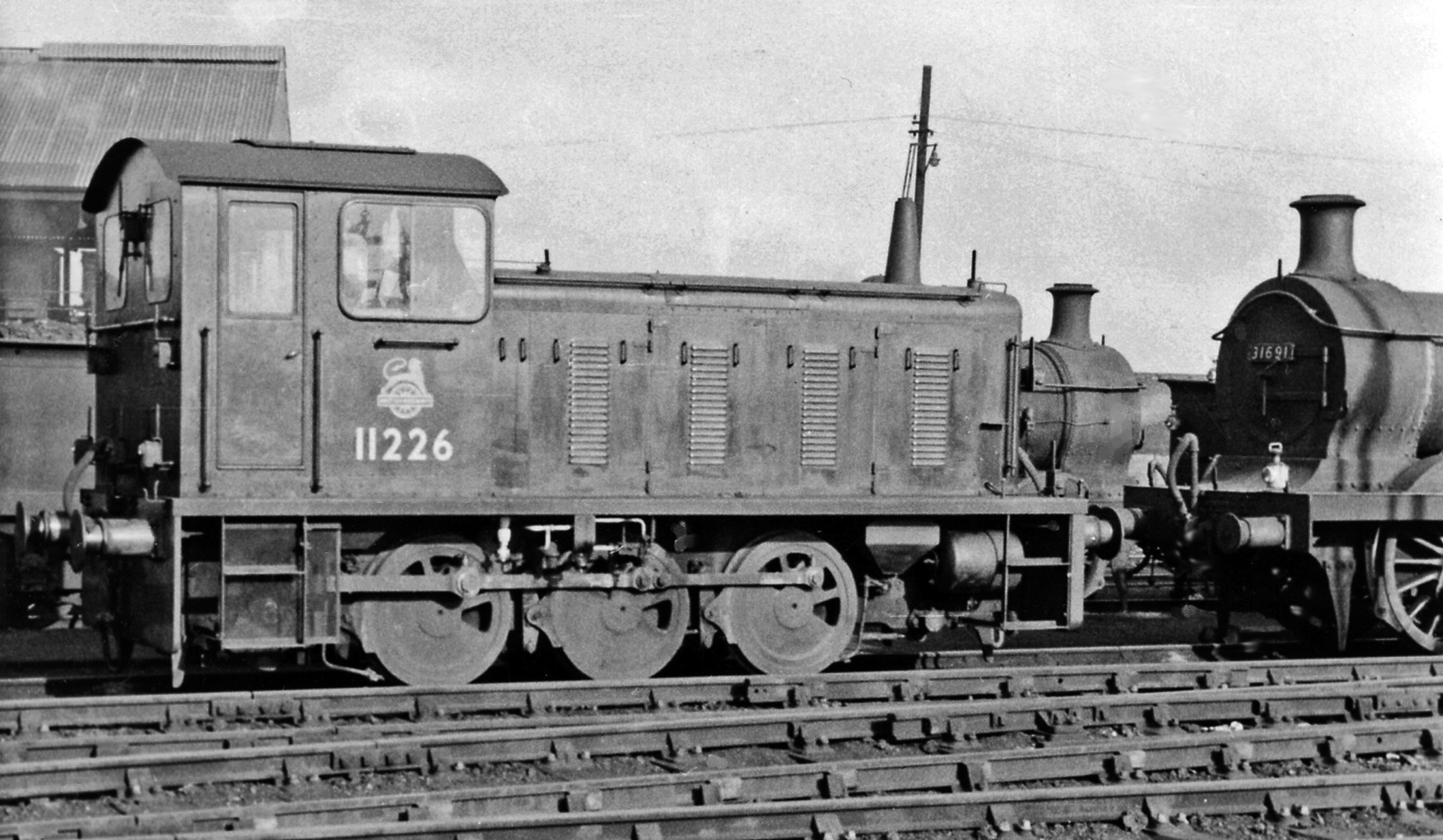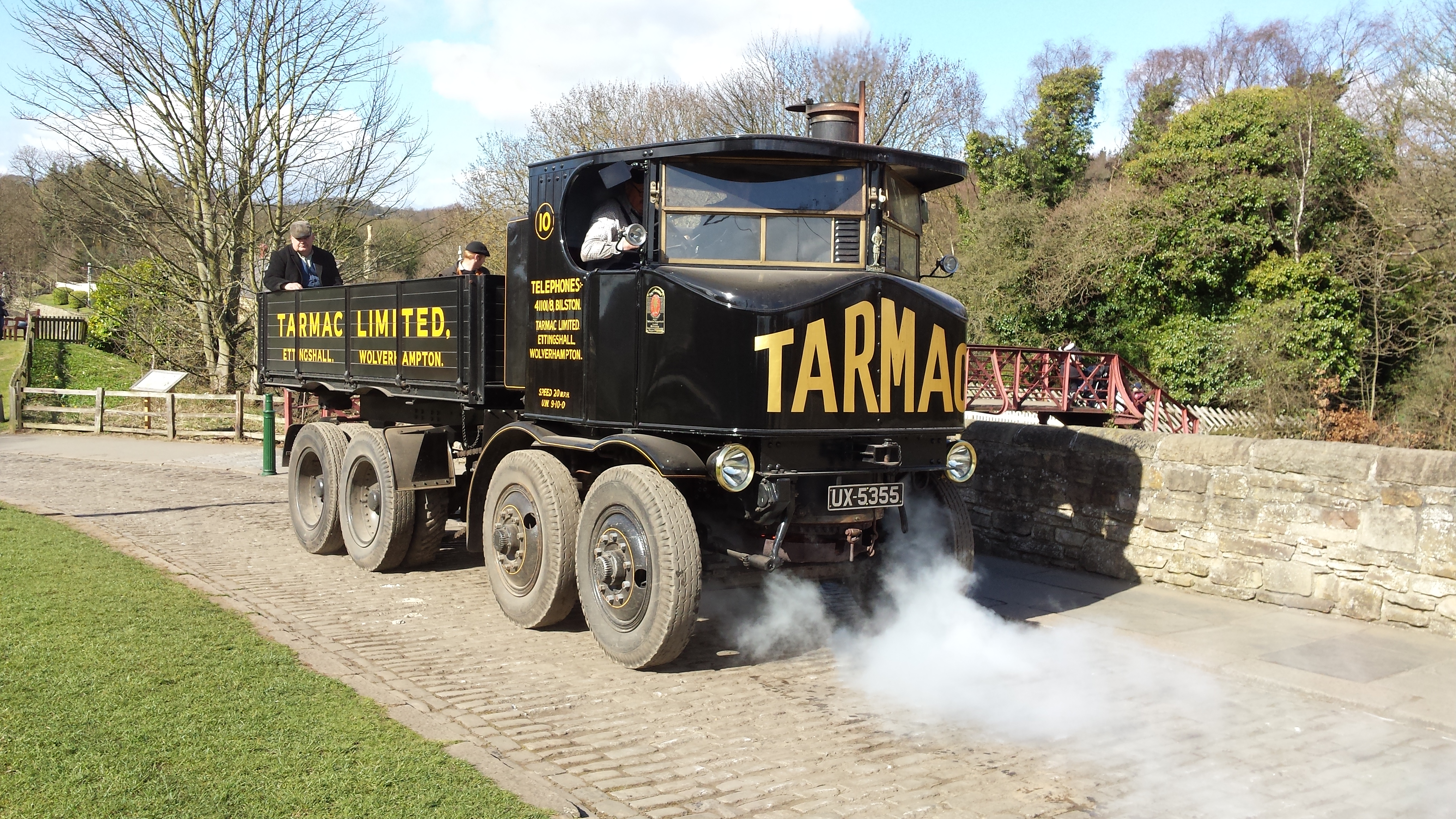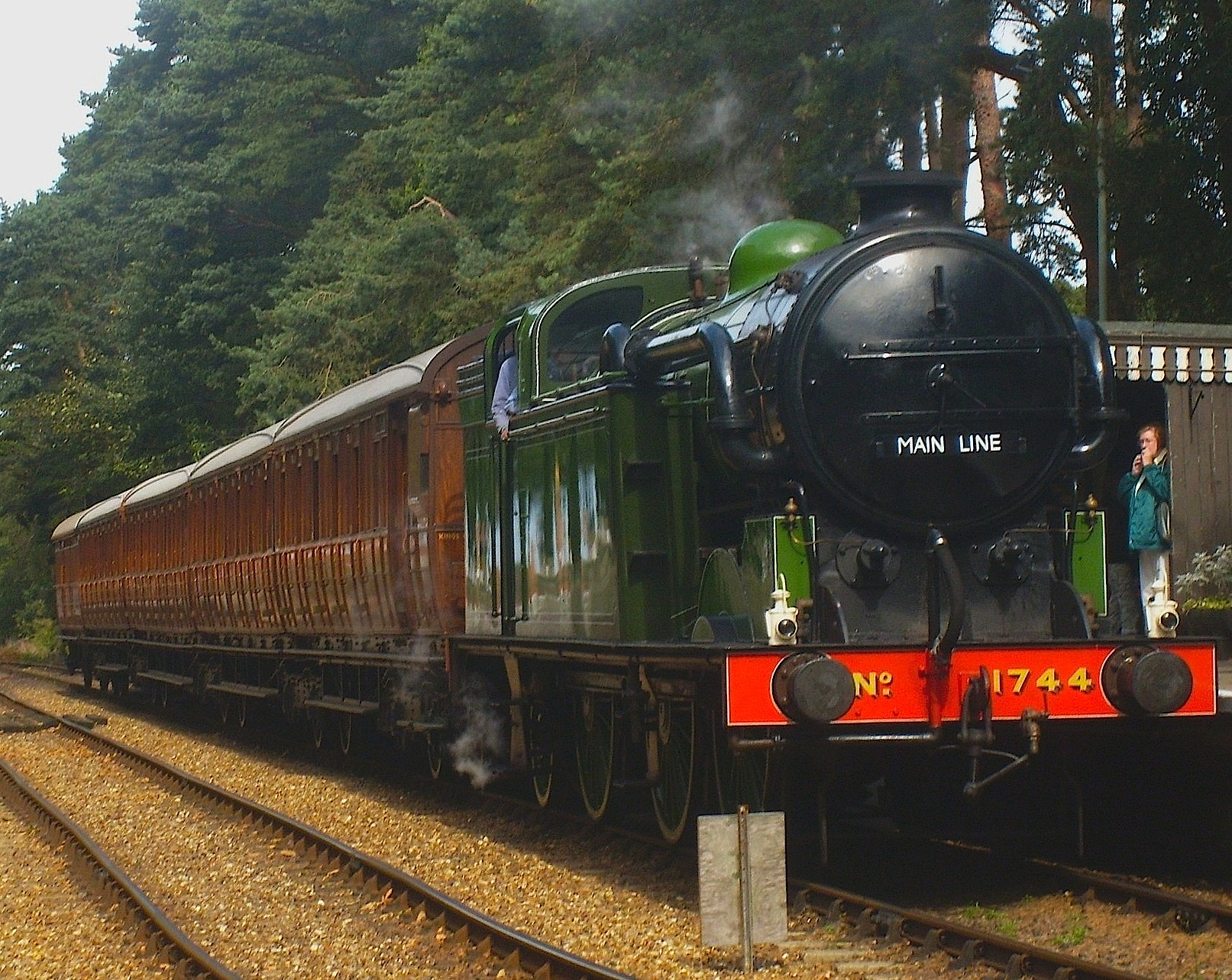|
Wisbech And Upwell Tramway
The Wisbech and Upwell Tramway was a rural standard gauge tramway in East Anglia. It was built by the Great Eastern Railway between Wisbech, Isle of Ely, Cambridgeshire and Upwell, now in Norfolk to carry agricultural produce. Although called a tramway, in many ways it more closely resembled a conventional railway line, and paved the way for the passing of the Light Railways Act 1896. History The Great Eastern Railway (GER) promoted the idea of a tramway between Wisbech and Upwell, and permission to construct the line was obtained by W. L. Ollard in 1873, but he failed to raise the finance to build it. The GER were still in favour of the line, and authorisation to construct it was enshrined in the Great Eastern Railway Act 1881. As well as carrying passengers, it was always intended as a freight line as well, and to this end it was built to standard gauge, with bull-head rails, rather than the tramway rails favoured by many British tramways. This allowed standard goods wagons t ... [...More Info...] [...Related Items...] OR: [Wikipedia] [Google] [Baidu] |
Wisbech
Wisbech ( ) is a market town, inland Port of Wisbech, port and civil parish in the Fenland District, Fenland district in Cambridgeshire, England. In 2011 it had a population of 31,573. The town lies in the far north-east of Cambridgeshire, bordering Norfolk and only 5 miles (8 km) south of Lincolnshire. The tidal River Nene running through the town is spanned by two road bridges. Wisbech is in the Isle of Ely (a former administrative county) and has been described as 'the Capital of The Fens". Wisbech is noteworthy for its fine examples of Georgian architecture, particularly the parade of houses along the North Brink, which includes the National Trust property of Peckover House and Garden, Peckover House and The Crescent, Wisbech, the circus surrounding Wisbech Castle. History Etymology The place name 'Wisbech' is first attested in the ''Anglo-Saxon Chronicle'' for the year 656, where it appears as ''Wisbeach''. It is recorded in the 1086 Domesday Book as ''Wisbeach''. ... [...More Info...] [...Related Items...] OR: [Wikipedia] [Google] [Baidu] |
Cowcatcher
A cowcatcher, also known as a pilot, is the device mounted at the front of a locomotive to deflect obstacles on the track that might otherwise damage or derail it or the train. In the UK small metal bars called ''life-guards'', ''rail guards'' or ''guard irons'' are provided immediately in front of the wheels. They knock away smaller obstacles lying directly on the running surface of the railhead. Historically, fenced-off railway systems in Europe relied exclusively on those devices and cowcatchers were not required, but in modern systems cowcatchers have generally superseded them. Instead of a cowcatcher, trams use a device called a fender. Objects lying on the tram track come in contact with a sensor bracket, which triggers the lowering of a basket-shaped device to the ground, preventing the overrunning of the obstacles and dragging them along the road surface in front of the wheels. In snowy areas the cowcatcher also has the function of a snowplough. Invention The cowca ... [...More Info...] [...Related Items...] OR: [Wikipedia] [Google] [Baidu] |
River Nene
The River Nene ( or : see below) is a river in the east of England that rises from three sources in Northamptonshire.OS Explorer Map sheet 223, Northampton & Market Harborough, Brixworth & Pitsford Water. The river is about long, about of which forms the border between Cambridgeshire and Norfolk. It is the tenth-longest river in the United Kingdom, and is navigable for , from Northampton to The Wash. Etymology and pronunciation Spelling of the river's name has altered over time; it was called the "Nenn" or "Nyn" in an 1810 engraving by draughtsmen George Cole and John Roper, while the Ordnance Survey of 1885 used what has since become standard spelling, "Nene". The origin and meaning of the River Nene's name is unknown. The earliest known examples, which date back to the 10th century AD, have been linked to Indo-European root words for snow, rain, or washing, but a direct connection is purely speculative. According to the British toponymist and medieval scholar Victor Watt ... [...More Info...] [...Related Items...] OR: [Wikipedia] [Google] [Baidu] |
Wisbech And Upwell Tramway - Outwell Village Depot - Geograph
Wisbech ( ) is a market town, inland port and civil parish in the Fenland district in Cambridgeshire, England. In 2011 it had a population of 31,573. The town lies in the far north-east of Cambridgeshire, bordering Norfolk and only 5 miles (8 km) south of Lincolnshire. The tidal River Nene running through the town is spanned by two road bridges. Wisbech is in the Isle of Ely (a former administrative county) and has been described as 'the Capital of The Fens". Wisbech is noteworthy for its fine examples of Georgian architecture, particularly the parade of houses along the North Brink, which includes the National Trust property of Peckover House and the circus surrounding Wisbech Castle. History Etymology The place name 'Wisbech' is first attested in the ''Anglo-Saxon Chronicle'' for the year 656, where it appears as ''Wisbeach''. It is recorded in the 1086 Domesday Book as ''Wisbeach''. The name Wisbech is popularly believed to mean "on the back of the (River) Ouse", O ... [...More Info...] [...Related Items...] OR: [Wikipedia] [Google] [Baidu] |
Beeching Cuts
The Beeching cuts (also Beeching Axe) was a plan to increase the efficiency of the nationalised British Rail, railway system in Great Britain. The plan was outlined in two reports: ''The Reshaping of British Railways'' (1963) and ''The Development of the Major Railway Trunk Routes'' (1965), written by Richard Beeching and published by the British Railways Board. The first report identified 2,363 stations and of railway line for closure, amounting to 55% of stations, 30% of route miles, and 67,700 British Rail positions, with an objective of stemming the large losses being incurred during a period of increasing competition from road transport and reducing the rail subsidies necessary to keep the network running. The second report identified a small number of major routes for significant investment. The 1963 report also recommended some less well-publicised changes, including a switch to the now-standard practice of containerisation for rail freight, and the replacement of some ... [...More Info...] [...Related Items...] OR: [Wikipedia] [Google] [Baidu] |
British Rail Class 04
The British Rail Class 04 is a 0-6-0 diesel-mechanical shunting locomotive class, built between 1952 and 1962 and was the basis for the later Class 03 built in the British Railways workshops. History The prototype locomotive was built in 1947 and served as a departmental shunter at Hither Green depot as number DS1173, before being transferred to the capital stock list as D2341 in 1967. The Class 04 locomotives were supplied by the Drewry Car Co., which at the time (and for most of its existence) had no manufacturing capability. Drewry sub-contracted the construction work to two builders both of whom built other locomotives under the same arrangement. Early locomotives which became D2200-41 (including DS1173) were built by Vulcan Foundry in 1952–56, and later examples D2242-2339 were built by Robert Stephenson and Hawthorns in 1956–61. Design evolution A clear line of development can be seen in the Class 04 from the 0-4-0DM locomotives built by Andrew Barclay and ... [...More Info...] [...Related Items...] OR: [Wikipedia] [Google] [Baidu] |
Geared Steam Locomotive
A geared steam locomotive is a type of steam locomotive which uses gearing, usually reduction gearing, in the drivetrain, as opposed to the common directly driven design. This gearing is part of the machinery within the locomotive and should not be confused with the pinion that propels a rack locomotive along the rack between the rails. The geared steam locomotives that have been built have been for conventional track, relying on the adhesion between wheels and rail. Explanation and rationale The steam locomotive, as commonly employed, has its pistons directly attached to cranks on the driving wheels; thus, there is no gearing, one revolution of the driving wheels is equivalent to one revolution of the crank and thus two power strokes per piston (steam locomotives are almost universally double-acting, unlike the more familiar internal combustion engine). The maximum rotational speed is fairly fixed for a given engine technology. Given the lack of any variable-ratio transmis ... [...More Info...] [...Related Items...] OR: [Wikipedia] [Google] [Baidu] |
Sentinel Waggon Works
Sentinel Waggon Works Ltd was a British company based in Shrewsbury, Shropshire that made steam-powered lorries (steam wagons), railway locomotives, and later, diesel engined lorries, buses and locomotives. History Alley & MacLellan, Sentinel Works, Jessie Street Glasgow Alley & MacLellan was founded in 1875 and was based in Polmadie, Glasgow. This company continued in operation until the 1950s. Initially manufacturing valves and compressors for steam engines, and later whole steamships, Alley & MacLellan acquired Simpson and Bibby of Horsehay, Shropshire, manufacturer of steam-powered road vehicles, in 1903. They began producing steam road vehicles in 1905 and in 1906 introduced a five-ton vertical-boiler steam wagon, which featured a two-cylinder undertype engine and chain drive. Around 1915, Alley & McLellan moved the steam wagon production to a new factory to Shrewsbury and it continued under a separate company (see below), and in 1918 the company also opened a th ... [...More Info...] [...Related Items...] OR: [Wikipedia] [Google] [Baidu] |
LNER Class Y10
The LNER Class Y10 was a class of two 0-4-0T geared steam locomotives built by Sentinel Waggon Works for the London and North Eastern Railway and introduced in 1930. The LNER numbered them 8403 and 8404 but they were later re-numbered 8186 and 8187. This was the second use of the classification Y10 by the LNER. The first was for an ex-North British Railway 0-4-0 steam tender locomotive, withdrawn 1925. Both the Sentinels passed into British Railways ownership in 1948 but 8187 was withdrawn almost immediately. Number 8186 was allocated the BR number 68186, but never actually carried it, and was withdrawn in 1952. Power unit The superheated vertical water-tube boiler and the motor were similar to those used in Sentinel steam wagons. Each locomotive had two 2-cylinder engines, giving a total of . The engines had poppet valves and reversing was by sliding camshaft. The advantage of the water-tube boiler was that steam could be raised much more quickly than with a conventional ... [...More Info...] [...Related Items...] OR: [Wikipedia] [Google] [Baidu] |
North Norfolk Railway
The North Norfolk Railway (NNR) – also known as the "Poppy Line" – is a heritage steam railway in Norfolk, England, running between the towns of Sheringham and Holt. The North Norfolk Railway is owned and operated as a public limited company, originally called Central Norfolk Enterprises Limited. The railway is listed as exempt from the UK Railways (Interoperability) Regulations 2000. History Route history The line once formed part of the Midland and Great Northern Joint Railway's Melton Constable to Cromer Beach branch line. The first section, from Melton to Holt, was opened on 1 October 1884. After a suspension of work, the Holt to Cromer section of line was completed by direct labour, and opened on 16 June 1887. A through Kings Cross to Cromer express started running in August 1887, and although the construction had been expensive, the boost to revenue from the new line was considerable. A second train was put on the following year, in the down direction cons ... [...More Info...] [...Related Items...] OR: [Wikipedia] [Google] [Baidu] |
The Titfield Thunderbolt
''The Titfield Thunderbolt'' is a 1953 British comedy film directed by Charles Crichton and starring Stanley Holloway, Naunton Wayne, George Relph and John Gregson. The screenplay concerns a group of villagers trying to keep their branch line operating after British Railways decided to close it. The film was written by T. E. B. Clarke and was inspired by the restoration of the narrow gauge Talyllyn Railway in Wales, the world's first heritage railway run by volunteers. "Titfield" is an amalgamation of the names Titsey and Limpsfield, two villages in Surrey near Clarke's home at Oxted. Michael Truman was the producer. The film was produced by Ealing Studios and was the first of its comedies shot in Technicolor. There was considerable inspiration from the book ''Railway Adventure'' by established railway book author L. T. C. Rolt, published in 1953. Rolt had acted as honorary manager for the volunteer enthusiasts running the Talyllyn Railway for the two years 1951–52. ... [...More Info...] [...Related Items...] OR: [Wikipedia] [Google] [Baidu] |
Kelvedon And Tollesbury Light Railway
The Kelvedon and Tollesbury Light Railway was a locally promoted railway company, intended to open up an agricultural district that suffered from poor transport links. The enactment of the Light Railways Act 1896 encouraged the promoters to persuade the dominant main line railway, the Great Eastern Railway (GER), to participate in the construction and operation of the line. The line opened from Kelvedon to Tollesbury in 1904. At Kelvedon it had its own station close to the GER main line station. All the stations had minimal buildings—in most cases old coach or bus bodies served as waiting rooms, and the passenger rolling stock consisted of conversions of old vehicles. Passenger business was never dominant, but the area around Tiptree experienced major growth in the culture of soft fruit and of jams. The GER took over the original company, and built an extension to Kelvedon Pier on the River Blackwater estuary; this opened in 1907. It was hoped that this would lead to numerou ... [...More Info...] [...Related Items...] OR: [Wikipedia] [Google] [Baidu] |




.jpg)






